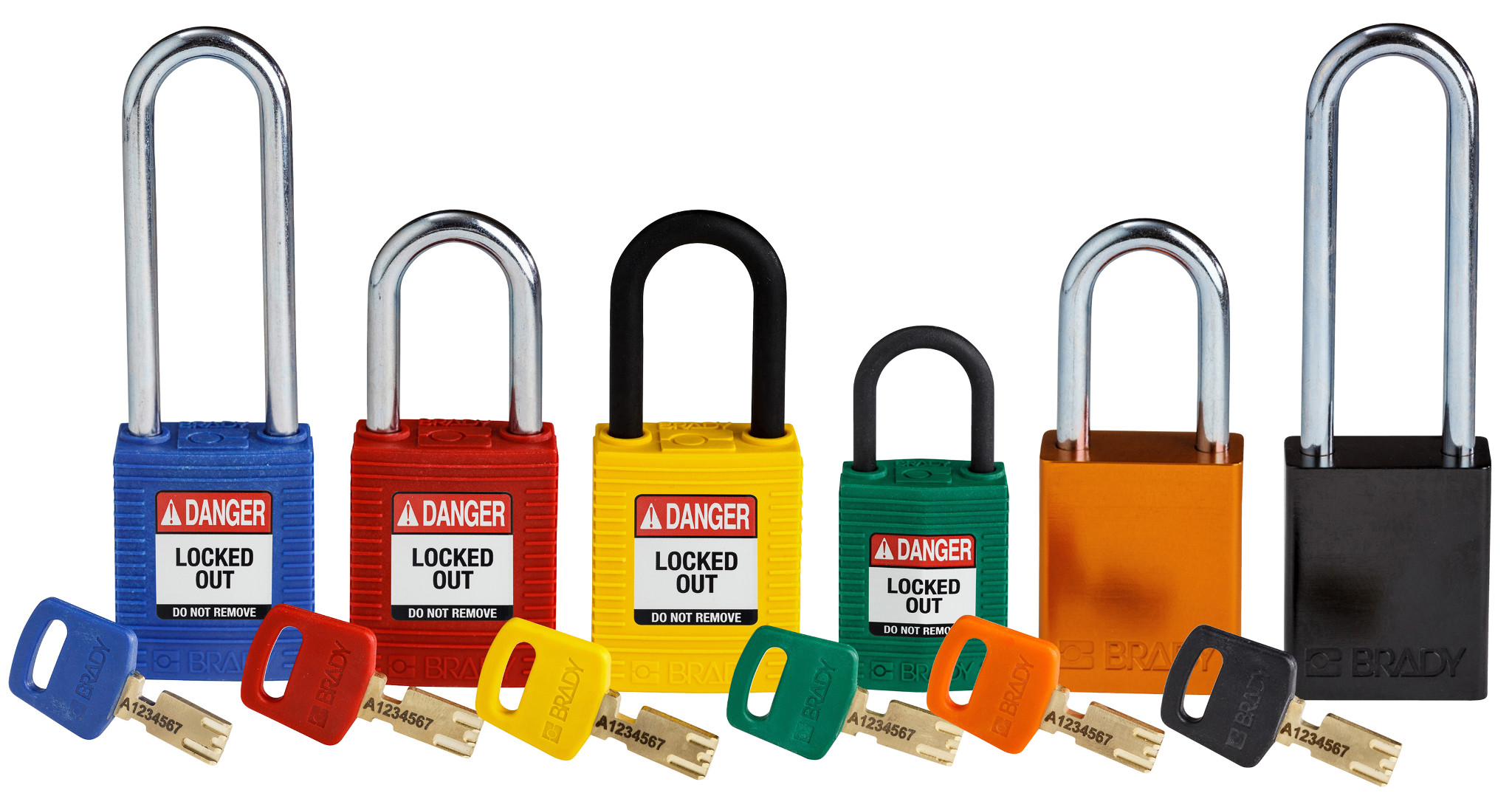What to consider when determining the right safety padlock?
- Posted on
- 0

When determining the right Lockout-Tagout safety padlock for your application, pay close attention to the following factors.
Not every padlock is simply a Lockout-Tagout safety padlock. For a padlock to qualify as a Lockout-Tagout padlock, there are certain requirements that must be met. The requirements set out by OSHA:
- Lockout-Tagout devices must only be used for Lockout-Tagout purposes.
- Lockout-Tagout devices have to withstand the environment they are exposed to.
- Lockout-Tagout devices must be able to withstand all weather conditions.
- Lockout-Tagout devices should not deteriorate when used in corrosive environments, such as areas where acid and alkaline chemicals are processed and stored.
- Lockout-Tagout products should be standardised based on the type of locks.
- Lockout devices should be strong enough to prevent removal without the use of excessive force or unusual techniques.
- Lockout-Tagout products, must be robust enough to prevent inadvertent or accidental removal.
- Lockout-Tagout devices must indicate the identity of the employee applying the device(s).
- Lockout-Tagout products should warn of dangerous situations and should be labelled, such as: "Do not start." "Do not open." "Do not close." "Do not operate." "Do not activate."
Different materials
When determining the right safety padlock, the first thing to consider is the application the safety padlock will be used for. Is this a mechanical or electrical application? Based on this, you choose, for example, a padlock with a nylon or steel body and shackle. Lockout-Tagout padlocks come in different materials including zenex composite, nylon and aluminium.
Zenex plastic composite security padlocks
Master Lock's Zenex safety padlocks are specially designed for use in Lockout-Tagout procedures. Zenex padlocks are manufactured from Zenex composite plastic and are impact-resistant, lightweight, resistant to high and low temperatures, non-conductive, non-magnetic, chemical-resistant, UV-stable, spark-free (ATEX certified) and corrosion-resistant.
Nylon safety padlocks
Nylon safety padlocks have a lightweight nylon body with a steel or nylon shackle that are ideal for industrial environments. Our nylon safety padlocks from Brady are specifically designed for use in Lockout-Tagout applications. The brass lock mechanism is built into an insulated nylon housing where the contact parts between the key and cylinder are also non-conductive. These nylon safety padlocks are impact resistant, lightweight, resistant to high and low temperatures, non-conductive, non-magnetic, chemical resistant, locked key when opened, UV stable and corrosion resistant.
Aluminium safety padlocks with plastic cover
Aluminium safety padlocks with a plastic cover from Abus and Brady have also been specially developed for Lockout-Tagout applications. The aluminium lock is very robust yet lightweight. All these security padlocks have a lock body with a plastic cover, are impact resistant, robust yet lightweight, are resistant to very high and low temperatures, non-conductive, non-magnetic, chemical resistant, locked key when the shackle is opened, automatic locking when the shackle is closed, can be well detected in the food industry, have an FDA-approved lubricant, a highly dust-resistant lock mechanism and are corrosion resistant.
Key system
When determining the right safety padlock, in addition to looking at the application, you also need to determine the type of key system you want.
Step one when establishing a key system is determining how many employees you want to include in this Lockout-Tagout system. How many different coded (KD) padlocks are needed? KD stands for Keyed Different, in this case each padlock has its own unique key code and key.
Next, determine how many employees need more than one safety padlock. This is, for example, a technical service employee who is performing multiple energy sources or multiple LOTO procedures at the same time.
These employees are given multiple padlocks with equal keys (KA). KA stands for Keyed Alike, which means same-keyed. In a series with Keyed Alike padlocks, each padlock has the same key. Keyed Alike padlocks are used when one employee needs several personal padlocks.
In addition, equal-coded padlocks are used in a group lockout. Here, the group lockout officer uses a set of equal-locking locks for which there is one key.
Do not forget to consider using a Master Key. When using a Master Key, each lock in the series can be opened with a master key. Master key systems are available for both Keyed Alike and Keyed Different padlocks.
Coding safety padlocks
To create a clear overview and structure, different types of coding can be used, Coding can be used to communicate machine maintenance status, reduce material loss and comply with machine safety regulations. Coding safety padlocks can be done by using colour coding and laser engraving.
Colour coding
Colour-coded padlocks tell you at a single glance who is still working on a machine.
The following colour codings are commonly used (industry-leading practice):
- Red = Machine padlock (group lockout locks)
- Green = Personal release padlock (area supervisor/machine manager)
- Blue = Personal lock TD (often a set with several locks per employee)
- Yellow = Personal lock external personnel/contractors
- Orange = Personal lock employees
Laser engraving
Engraving a safety padlock is a simple and permanent way to keep your padlocks organised. You can determine the engraving of your padlocks yourself; you can choose, for example, to put the name of the department where the padlock is used on it, number the padlocks or put the key code of the key on the padlock so that the key and padlock can easily be matched.
If you need help determining the right padlock or key system for your organisation, we will be happy to help.



















Comments
Be the first to comment...